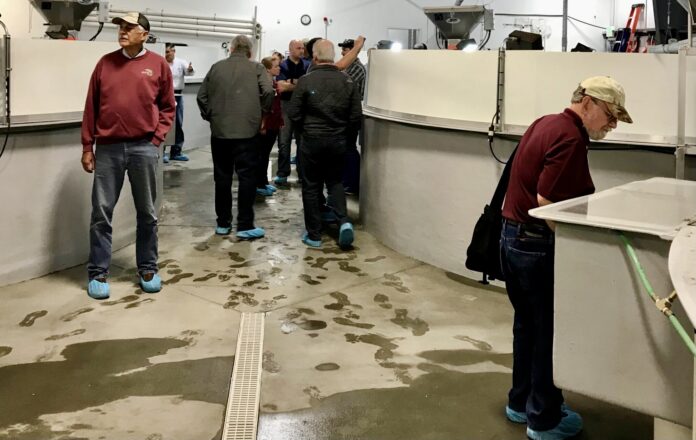Land-based salmon farming was for a while the production method of choice of activists, but dissenting voices from this camp have been emerging lately.
On Friday, a New Zealand animal rights group has added its voice to those against land-based salmon farming following Thursday’s announcement that the country will have its first land-based salmon farm.
New Zealand produces around 11,500 tonnes of farmed salmon in ocean-based farms, with more than half of the volume coming from New Zealand King Salmon, data from the government show.
The country’s aquaculture strategy aims to see $1.6-billion (NZ$3 billion) in annual growth. Officials consider the $9.28-million (NZ$16.7 million) land-based project led by Mt Cook Alpine Salmon as a sustainable pathway toward that goal. The government has thus committed $3.7 million (NZ$6.7 million) into the project via its impact investing arm, SFF Futures.
Minefield
But SAFE (short for Save Animals From Exploitation) said the project is a “disaster waiting to happen” because of its “glaring lack” of consideration for animal welfare.
“Salmon in land-based farms are held at extremely high stocking densities, which Huon Aquaculture estimates to be up to 15 times higher than current maximum sea cage levels. Current sea cage conditions already cause salmon to suffer through overcrowding, poor water quality and disease, resulting in mass salmon deaths every year. At the end of the day, salmon farming is factory farming, which is inherently cruel,” said the group.
Ocean-based open-net farms are seen posing a threat to marine environments and wild species, but questions about land-based salmon farming’s sustainability has come to fore too, because of the massive amounts of land, groundwater water and energy it needs. Its economic viability for operators is also in question.
Soaring costs
The International Salmon Farmers Association illustrated the massive requirements of transitioning the industry from ocean-based salmon farming to land-based in the Canadian context, in its report: “The Evolution of Land-Based Atlantic Salmon Farms.”
“Even if it were technically and economically feasible, and if enough coastal land and water were available, the current production in Canada alone would require 28,000 football fields, 33,719 acres, or 136 square kilometers of land to grow fish in appropriate densities and water depths in land-based systems,” it said.
While the report was released in 2016 and was written based on existing knowledge at that time, and technology has improved since, it can be argued that resource requirements remain practically the same. In fact, today’s very high energy costs have raised more doubts about the technology’s sustainability.
Read also: Soaring energy prices magnify doubts about RAS. Inflation to slow down some projects in the pipeline
In August, US environmentalists also questioned land-based salmon farming technology’s green claims.

